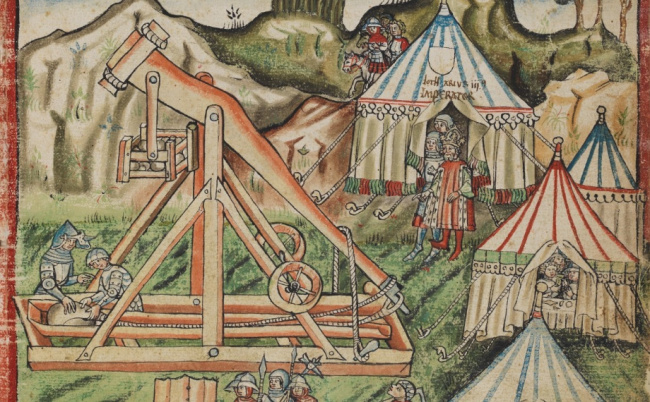
Courtesy of medievalists.net
The Trebuchet is a simple machine that makes use of gravity in order to launch small objects to by dropping larger ones (with regard to mass). Developed in medieval, around the 12th century these served as a great asset to the medieval arsenal of siege equipment. It was also an upgrade to the catapult and ballista, in both range and accuracy. It became a favorite in medieval battles, as it was an effective way to demolish castle walls.
As pictured above, a trebuchet was built with an axis that served as a pivot to a giant lever. The lever, loaded with a large weight on the shorter end, could launch a projectile hundreds of feet vertically and horizontally. The articles following this one will attempt to explain and describe the workings of a simplified model of the trebuchet. Unfortunately, its is far past the scope of my course to successfully describe a trebuchets motion, it requires two differential equations one for the beam and one for the sling. To simplify things to the scope of the course I am in, I will not take the sling into account, not the numerous dissapative forces present. Yes, essentially the following articles describe the machines function in a vacuum built from friction less materials. Though certainly not perfect, the calculations in the following pages do model of the situation giving readers a good sense of what trebuchets are capable of.
For information on how the trebuchet functions, see and overview of the trebuchets' launch mechanism.